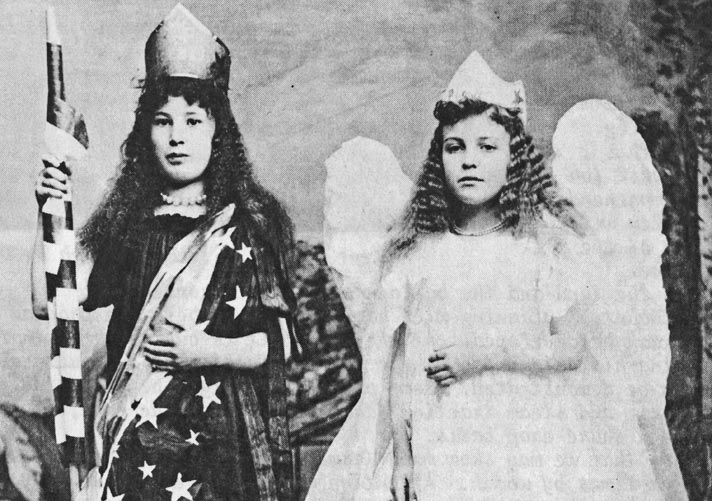Pioneer Profiles – July 2017
Well into the 20th Century, the Fourth of July was a bigger U.S. holiday than Christmas. Long before Congress declared July 4th an official holiday in 1870, John Adams had written to his wife Abigail shortly after the signing of the Declaration of Independence in 1776 that the occasion “ought to be solemnized with pomp and parade, with shews, games, sports, guns, bells, bonfires, and illuminations from one end of the continent to the other.”
And so it was and is.
In the midst of the Revolutionary War in 1777, Philadelphia held large Independence Day festivities. The Continental Congress feasted at an official dinner, gave toasts, and arranged a 13-gun salute. Residents celebrated with speeches, parades and fireworks. A year later, with France now allied with the colonies, even the American army celebrated the big day—George Washington gave his troops a double ration of rum and ordered a cannon salute to mark the occasion.
After the Revolutionary War, Americans continued to commemorate Independence Day in celebrations that allowed the new nation’s emerging political leaders to create a feeling of unity. The tradition of patriotic celebration became even more widespread after the War of 1812, another face-off with Great Britain.
Celebrations in the 1820’s and 1830’s typically started with an artillery reveille at dawn—a fuselage of cannons or muskets shot into the air—and the ringing of town bells. A parade of militia, bands, wagons, notables, school children, and other marchers would begin around 9 a.m. The program following would usually include an opening prayer, the reading of the Declaration of Independence, and a lengthy oration given by a local or state dignitary.
After the speeches, men would continue the celebration at the local saloons while the women would go home. The men would hoist 13 regular toasts—the first for the current President and the second for George Washington. The 13th toast would be for women. Voluntary toasts would continue for as long as the men could stand (or stagger).
This form of celebration would surely have appealed to at least Jacksonville’s male miners, settlers, and merchants—including those foreign born. Many had left poverty or oppressive circumstances, and the concept of freedom and opportunity would have been a strong draw…and alcohol seems to have always been part of any non-work day.
This pattern of celebration continued until the Civil War. As the country became more divided, Fourth of July celebrations became more militaristic. The men would march through the streets armed to the teeth, followed by young boys marching behind them with sticks to mimic their actions. There would also be sham battles where participants portrayed what was occurring on battlefields.
Following the Civil War, celebrations shifted from militarism to escapism. Picnics and barbecues became popular. Fundraisers for orphans and widows replaced sham battles. Baseball gained popularity, regional leagues formed, and towns held Independence Day baseball tournaments. While readings of the Declaration of Independence and orations were still featured, Independence Day festivities increasingly included fireworks, contests, games, and shows, with celebrations often reflecting local amusements.
The Oregon Sentinel provided a vivid full page description of Jacksonville’s Centennial Independence Day celebration on July 4, 1876.
Citizens were awakened at sunrise with cannon fire. Soon after the “streets were thronged with a joyous and expectant crowd all anxious to do honor to their yearly holiday.” Vehicles loaded with “paraphernalia to decorate the grounds and supplies to meet the wants of the expected crowd” hurried to William Bybee’s grove, the site of the local racetrack and many Jacksonville celebrations.
The parade formed in front of the Courthouse. Local dignitaries in “appropriate uniform and mounted on prancing and gaily caparisoned steeds” headed the procession, followed closely by a seven-piece brass band playing national airs. A parade highlight came next—an “ornamented car drawn by four milk-white horses” contained 13 young ladies, “the youth and beauty of the town,” dressed in Colonial attire and representing the original colonies. They were accompanied by Master Ben Beekman, impersonating George Washington, and Master Eddy Farmer, portraying General U.S. Grant.
The next entry was a large wagon “containing 38 little girls dressed in white, carrying miniature flags, and labeled in broad sashes, each bearing the name of a State.” At the front of the car were the Goddess of Liberty and the Angel of Peace. As the wagon made its way to Bybee’s grove, the girls sang various patriotic songs, each bringing “cheer upon cheer from the crowd.”
The parade continued with a carriage containing the day’s orator, reader, and chaplain; members of the Jacksonville Odd Fellows Lodge in full regalia; the Jackson County Cavalry; and the “Mulligan Guards,” an Infantry Company of boys aged 10 to 15. “Then came citizens in carriages and wagons, on horseback and on foot, lengthening the procession to nearly a mile.”a
Upon arriving at the racetrack grandstand, the “exercise of the day” commenced: a prayer by Rev. Moses Williams; the national anthem sung by the Glee Club; a reading of the Declaration of Independence; and an hour-and-a-half oration by Professor J.W. Merrit, deemed to have been “the finest oration ever spoken in Jackson County” and frequently interrupted by “merited applause.”
After further music by the band and Glee Club, the crowd dispersed to enjoy dinner and the various amusements—a huge swing, a “dancing floor,” military exhibitions, cannon fire, clowns known as the “Fool Killers” who entertained the younger children, and other activities. Some 1,200 people came from all over the County for the day’s events.
Regrettably, the evening’s anticipated fireworks did not occur—the express company refused to carry “that kind of freight.” However, an “elegant party” was given at the rooms of the Social Club. “Until an early hour of the following morning, the young people of the place enjoyed a continuation of the day’s festivities by indulgence in a mazy dance, and many of the old folks took as lively a chance as the younger ones.”
2017-July-SOHS-#5933-4th-Pageantry.
